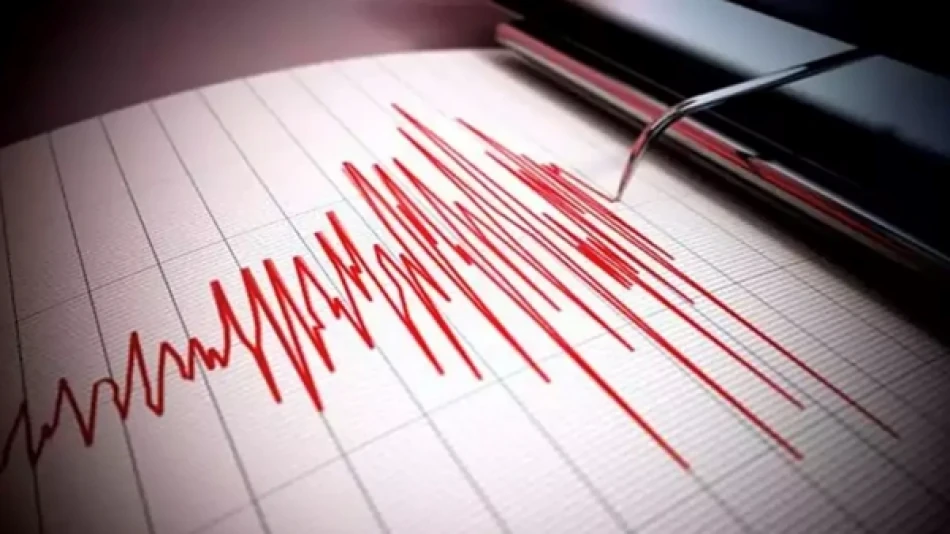
Powerful Earthquake Strikes Indonesia's Sulawesi, Dozens Injured
Magnitude 6.0 Earthquake Strikes Central Indonesia, Injuring 29 as Seismic Activity Intensifies
A powerful 6.0-magnitude earthquake struck Indonesia's Sulawesi island early Sunday morning, injuring at least 29 people and highlighting the archipelago nation's continued vulnerability to seismic disasters. The incident underscores Indonesia's position along the volatile Pacific Ring of Fire, where tectonic activity remains a persistent threat to the country's 270 million residents.
Immediate Impact and Emergency Response
The earthquake hit Poso city at 5:38 AM local time (2138 GMT Saturday), with its epicenter located 10 kilometers below the surface. Thirteen of the injured were transported to medical facilities in the Poso and Tojokurundo districts of Central Sulawesi province, according to Abdul Muhari, spokesperson for the National Disaster Mitigation Agency.
Two victims remain in critical condition, while the remaining casualties suffered various degrees of injury from the 15-second tremor that sent residents fleeing from their homes across multiple villages in the Poso Pesisir area.
No Tsunami Threat Declared
Authorities quickly reassured the public that no tsunami warning was necessary, despite the earthquake's proximity to coastal areas. This rapid assessment reflects improvements in Indonesia's disaster response capabilities following devastating past events.
Sulawesi's Seismic Vulnerability
Central Sulawesi has experienced significant seismic trauma in recent years. The region was devastated by a 7.5-magnitude earthquake in September 2018 that triggered a deadly tsunami, killing over 4,300 people in Palu and surrounding areas. That disaster exposed critical gaps in Indonesia's early warning systems and urban planning regulations.
Sunday's earthquake, while considerably smaller, serves as a reminder that the geological forces responsible for the 2018 catastrophe remain active. The island sits at the intersection of multiple tectonic plates, making it one of Indonesia's most earthquake-prone regions.
Indonesia's Ongoing Battle with Natural Disasters
As the world's largest archipelagic state, Indonesia faces constant seismic threats along the Pacific Ring of Fire. The country experiences thousands of earthquakes annually, though most cause minimal damage. However, the potential for catastrophic events remains high, particularly in densely populated areas with substandard construction.
The government has invested heavily in early warning systems and disaster preparedness since the 2004 Indian Ocean tsunami, which killed over 170,000 Indonesians. These improvements likely contributed to the relatively swift response and casualty assessment following Sunday's earthquake.
Economic and Social Implications
While Sunday's earthquake caused no major infrastructure damage, frequent seismic activity poses ongoing challenges for Indonesia's economic development. Foreign investment in earthquake-prone regions often requires additional risk assessments, while insurance costs for businesses and residents remain elevated.
The incident also highlights the importance of building codes and enforcement in reducing casualties from moderate-strength earthquakes. As Indonesia continues its rapid urbanization, ensuring earthquake-resistant construction becomes increasingly critical for protecting lives and economic assets.
Preparedness Measures Continue
Authorities have advised residents to remain vigilant for potential aftershocks and avoid damaged buildings. This precautionary approach reflects lessons learned from previous disasters, where secondary tremors often caused additional casualties among people returning too quickly to compromised structures.
The relatively controlled response to Sunday's earthquake demonstrates Indonesia's improved disaster management capabilities, even as the underlying geological risks remain unchanged. For a nation where seismic activity is a constant reality, such preparedness measures represent the difference between manageable incidents and humanitarian catastrophes.
 Layla Al Mansoori
Layla Al Mansoori







